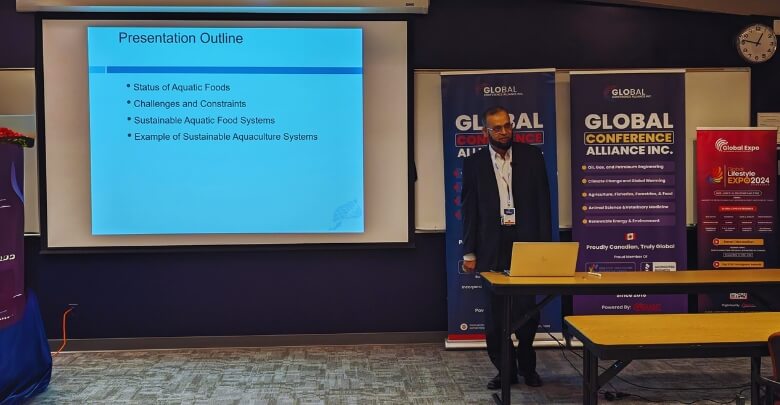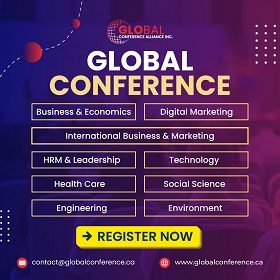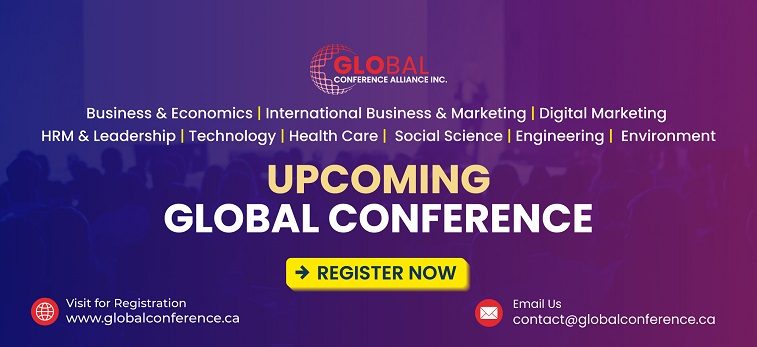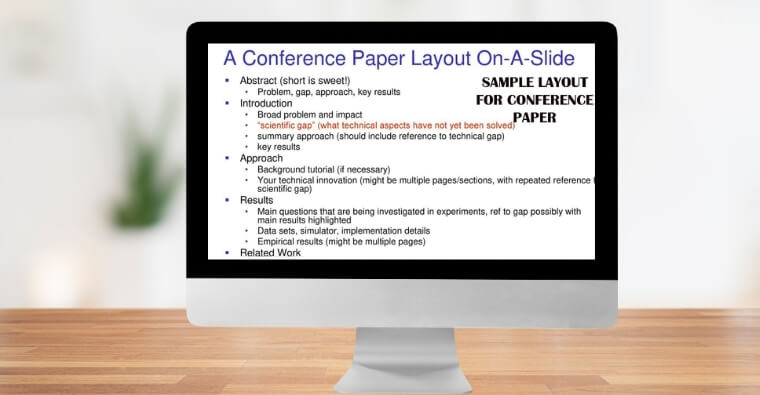Writing an abstract for a conference presentation is your opportunity to make a strong first impression. It’s a concise summary that not only highlights your work but also entices others to attend your talk. Yet, distilling your entire research into a few paragraphs can feel overwhelming.
So, how to write abstract for conference presentation?
Start by thoroughly understanding the submission guidelines provided by the conference. Write a concise title and introduce your topic clearly. Summarize your methods, highlight key results, and conclude with the implications of your findings.
Remember to review and revise for clarity, include relevant keywords for searchability, and seek feedback from colleagues to refine your abstract further. Ready to dive in? Let’s go over each step in detail.
What is an Abstract for a Conference Presentation?
An abstract for a conference presentation is a concise summary of your research, designed to capture interest. It outlines the main objective, key methods, and significant findings of your work. The purpose is to give potential attendees a clear sense of what to expect from your presentation.
Writing an effective abstract is crucial, as it helps your work stand out in a competitive selection process. When preparing an abstract for a presentation at global events, such as conferences in Canada and other regions, it is important to follow the event’s specific guidelines to ensure relevance and clarity.
Ensure that your title is relevant and that your content is clear, concise, and engaging. Including key details succinctly enables reviewers to quickly grasp the significance of your research. A well-crafted abstract not only increases your chances of acceptance but also helps attract a broader audience to your presentation.
Why is a Good Abstract Important for a Conference Presentation?
A well-written abstract is your first chance to make a strong impression in a conference setting. It summarizes your work and convinces reviewers and attendees of its value. The importance of a good abstract goes beyond just acceptance—it can impact your presentation’s reach and influence.
Captures the Attention of Reviewers
Reviewers often receive numerous abstracts to evaluate, so yours needs to stand out. A well-written abstract grabs attention quickly and effectively. It helps reviewers understand the importance of your research in a few sentences. This can increase the chances of your presentation being selected.
Helps Attendees Decide to Attend
A clear and engaging abstract is what attendees will read to decide whether to attend your talk. It offers them a glimpse of what you’ll be discussing, sparking their interest. Attendees often choose presentations based on the relevance of the abstract to their interests. A compelling abstract helps fill seats in your session.
Communicates the Value of Your Research
Your abstract is an opportunity to highlight the significance of your research and its broader implications. It should explain why your work matters in a way that’s accessible. This helps both reviewers and attendees appreciate the contribution of your research to the field. A well-explained abstract makes your research stand out among others.
Sets Clear Expectations for Your Presentation
An abstract outlines what you will cover in your presentation, providing a roadmap for the audience. This helps avoid misunderstandings or unmet expectations during the actual presentation. Attendees appreciate knowing what they’re signing up for, and a clear abstract does just that. It sets the stage for a well-received presentation.
Enhances Searchability and Discoverability
An abstract with relevant keywords is more likely to be found by those searching for related topics. Conference programs and websites often include abstracts in searchable databases. Using appropriate terms makes your abstract easily discoverable. This helps you reach a wider audience, even after the conference ends.
The Different Types of Abstracts for Conferences
When preparing an abstract for a conference, it’s essential to understand the different types you may encounter. Each type serves a specific purpose and requires a slightly different approach. Knowing which one to write can improve your chances of acceptance and help target the right audience.
Descriptive Abstracts
A descriptive abstract offers a brief overview without going into detailed results or conclusions. It focuses on the main topic and methods. This type of abstract is typically used for works in progress or conceptual presentations. It leaves readers curious, encouraging them to attend for more information.
Informative Abstracts
An informative abstract provides a more detailed summary, including results and conclusions. It gives a complete snapshot of the research from start to finish. This type is common in conferences where attendees expect to learn key findings upfront. It allows the reader to understand the entire project at a glance.
Critical Abstracts
A critical abstract not only summarizes the research but also offers a critique or evaluation of the work. It may compare findings with existing studies, offering a unique perspective. Critical abstracts are less common but valuable for discussions about methodology or controversial topics. They provide deeper insight into the strengths and limitations of the research.
Highlight Abstracts
Highlight abstracts are often used to focus on a specific finding or aspect of the research. They don’t cover the entire study but shine a light on one key area. This is useful when a single discovery is particularly noteworthy or revolutionary. It invites attendees to explore that specific topic in depth.
Comparative Abstracts
Comparative abstracts examine multiple studies, projects, or theories in the same abstract. They highlight similarities and differences between the various works. Understanding the differences between conference abstracts and paper abstracts is crucial when drafting this type. This approach is useful for panel discussions or sessions covering a broader range of research.
Knowing the different types of abstracts helps customize your submission to the conference’s expectations. Choose the type that best fits your research and the goals of your presentation. Each type offers unique benefits that can help engage your audience and communicate your findings effectively.
How to Write Abstract for Conference Presentation?
Writing an abstract for a conference presentation can be challenging, but a clear structure makes the process smoother. By focusing on key elements, you’ll create an engaging summary that reflects the essence of your work. Let’s break down the process step by step to make it easier.
Step 1: Understand the Conference Requirements
Before starting, make sure you thoroughly read the conference guidelines for abstract submission. Each conference may have specific rules about word limits, format, or content structure. These guidelines will help shape your abstract and ensure it fits the expectations. Following them closely will prevent issues during submission.
Step 2: Craft a Descriptive Title
Your title should be concise yet informative, clearly reflecting the content of your presentation. It should grab the attention of reviewers and attendees, making them want to read more. A well-crafted title provides an immediate understanding of your work’s focus. Avoid being vague or overly complicated with your wording.
Step 3: Write a Clear Introduction
Begin your abstract with a brief introduction that gives context and explains the purpose of your presentation. This section should capture the interest of the reader right away. Clearly state the problem or topic you are addressing and why it’s important. Make it engaging, but stay focused and concise.
Step 4: Summarize Your Methods
In this section, provide a summary of the methods or approaches you used in your research or project. Be clear and specific but avoid going into too much detail. The goal is to show how you conducted your work without overwhelming the reader with unnecessary information. It should be enough to provide an understanding of your approach.
Step 5: Highlight Key Results
Focus on the most significant findings from your research, as they form the core of your presentation. Highlight the outcomes that best support your conclusions or provide insights relevant to the conference theme. This section should be clear and direct, showing the impact of your work. Avoid unnecessary details or minor results.
Step 6: Conclude with Relevance
End your abstract by summarizing the conclusions and implications of your research. Explain why your findings are important and how they relate to the conference theme. This section should leave a lasting impression on the reader, emphasizing the value of your work. Keep it concise, but ensure your conclusion clearly shows the relevance of your research.
Step 7: Review and Revise
After writing your abstract, take some time away before reviewing it with fresh eyes. Look for clarity, conciseness, and any jargon that might confuse the reader. It’s always helpful to have a colleague review it for feedback as well. Revise as necessary to ensure your abstract is polished and error-free.
Step 8: Include Keywords
Include relevant keywords that will help with indexing and searchability. Keywords make your abstract more discoverable to a wider audience. Choose terms that are directly related to your presentation topic. This small step can help increase the visibility of your work.
Writing a well-structured abstract for a conference presentation ensures your work stands out and effectively communicates its value. By following the steps outlined, including reviewing guidelines and writing a strong title, you’ll be on the right track. Don’t forget to explore the steps to get an abstract title for science conferences, as this will further guide your process toward success.
Common Mistakes to Avoid When Writing Conference Abstracts
Writing a strong conference abstract can be tricky, and there are some common mistakes that can hinder its effectiveness. By being aware of these pitfalls, you can avoid errors that reduce clarity and impact. Here are key mistakes to watch out for when crafting your abstract.
- Lack of Focus: Avoid trying to cover too much information. A clear, focused abstract helps reviewers understand the main point quickly.
- Vague Title: A title that’s too broad or unclear fails to attract attention. Ensure your title is concise and descriptive.
- Overly Technical Language: Using too much jargon can confuse readers who are unfamiliar with your field. Aim for accessible language that appeals to a wider audience.
- Insufficient Results: Not including key findings weakens your abstract’s impact. Always highlight the most important outcomes to support your conclusions.
- Skipping the Conclusion: Failing to summarize the relevance of your research leaves your abstract incomplete. Ensure your conclusion ties everything together effectively.
- Ignoring Keywords: Forgetting relevant keywords can reduce the visibility of your abstract. Proper keywords help with searchability and reaching the right audience.
How to Revise and Improve Your Conference Abstract?
Revising your conference abstract is just as important as writing the initial draft. Taking the time to improve clarity, focus, and presentation can significantly increase your chances of acceptance. Here’s a step-by-step guide to help you refine and polish your abstract effectively.
Step 1: Take a Break Before Revising
After writing your first draft, step away from it for a short time. This gives you a fresh perspective when you come back to review. When revising with a clear mind, you’re more likely to spot areas that need improvement. It also helps prevent overlooking small errors or awkward phrasing.
Step 2: Focus on Clarity and Simplicity
Review your abstract to ensure the language is clear and concise. Complex or overly technical language can confuse readers who aren’t experts in your field. Simplify sentences without sacrificing meaning, making your work more accessible to a broader audience. This improves readability and engagement for potential attendees.
Step 3: Remove Unnecessary Details
While your abstract should summarize your work, avoid including too much detail. Extra information can distract from the core message and overwhelm the reader. Focus on the most critical points—your methods, findings, and conclusions. This ensures that your abstract is both clear and impactful.
Step 4: Check for Consistency and Flow
Ensure that each part of your abstract flows smoothly into the next. Consistent transitions between sections help readers follow your argument without confusion. Make sure that the introduction leads naturally to the methods, results, and conclusions. A well-structured abstract is easier to read and more professional.
Step 5: Get Feedback From Colleagues
Share your abstract with a colleague or mentor for feedback. A second set of eyes can spot weaknesses or areas that may need more clarity. They might also suggest improvements to enhance the overall structure and tone. Consider their suggestions and incorporate any that strengthen your abstract.
Frequently Asked Questions about How to Write Abstract for Conference Presentation?
Writing an abstract for a conference presentation can be a daunting task, but it’s essential to get it right. To help make the process easier, here are some frequently asked questions that cover additional aspects not yet discussed.
How Long Should a Conference Abstract Be?
Most conference abstracts are between 150 to 250 words, but this can vary. Always check the conference guidelines for specific word limits. Your abstract should be concise, providing enough detail to inform readers without overwhelming them with unnecessary information.
Can I Use Figures or Tables in My Abstract?
Generally, abstracts do not include figures or tables due to space constraints. Instead, focus on summarizing your key findings and methods in text form. This keeps your abstract concise and aligned with typical submission requirements for conferences.
How Much Background Information Should Be Included?
Your abstract should provide just enough background to set the context for your research. Avoid lengthy explanations of existing studies. The goal is to highlight the new insights your work brings while briefly acknowledging the background it builds upon.
Is It Necessary to Mention the Conference Theme in My Abstract?
Mentioning the conference theme can help align your abstract with the event’s focus. While it’s not always required, connecting your research to the theme can increase its relevance. This shows how your work contributes to broader discussions at the conference.
Can I Submit the Same Abstract to Multiple Conferences?
It’s possible to submit the same abstract to different conferences, but be mindful of each conference’s rules. Some conferences may require original content. Additionally, tweaking your abstract to suit the audience or theme of each event can improve acceptance chances.
Concluding Thoughts
Mastering the art of writing an abstract for a conference presentation is essential for successfully communicating your research. By understanding the structure, focusing on clarity, and following submission guidelines, you can create an abstract that stands out. Knowing how to write abstract for conference presentation not only increases your chances of acceptance but also helps you attract a larger audience.
Remember to review and revise your work, ensuring it is both engaging and relevant to the conference theme. With these steps, you’ll be well-prepared to present your research effectively at any conference.








